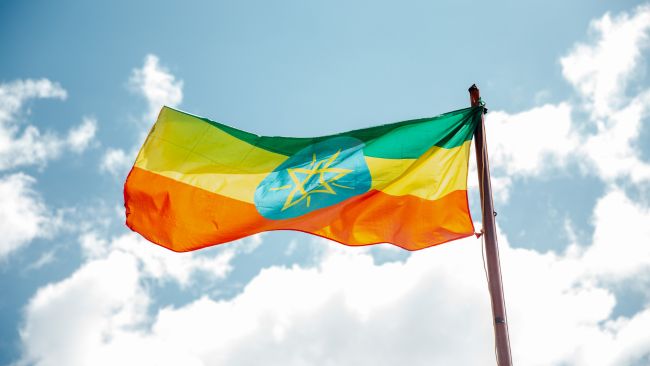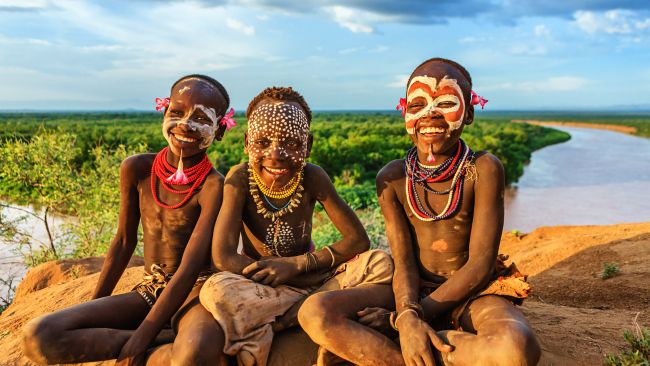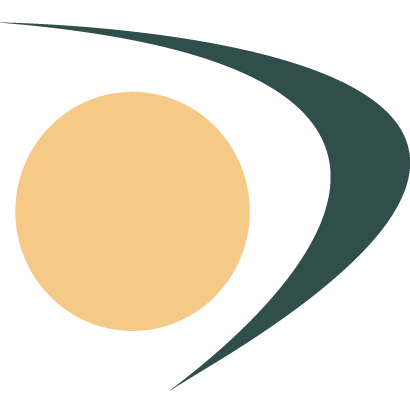The Language and Culture of Ethiopia

Ethiopia, officially known as the Federal Democratic Republic of Ethiopia, is one of the oldest nations in the world. It is the most populous nation in Eastern Africa, known as the Horn of Africa, with a population of about 122,662,327 people. Being one of the first African nations to engage in international politics, Ethiopia contributed materially and morally to the decolonization of other African nations and the expansion of the African Union. Eritrea borders Ethiopia to the north, Djibouti to the northeast, Somalia to the east, Kenya to the south, and the West by South Sudan and Sudan. The country is a multiethnic nation. The primary ethnic groups in the nation are the Oromo making up 35.3% of the population, Somali 26.2%, Amhara 6.0%, Tigray 5.9%, Sidamo 4.3%, Gurage 2.7%, Welaita 2.3%, and others 17.3%. The capital of Ethiopia is Addis Ababa, which means “New Flower.” It is located in the center of the country and is home to the offices of many international organizations, including the African Union.
Flag of Ethiopia
 The Ethiopian flag is a plain tricolor of green, yellow, and red, with a central blue disk bearing a yellow star with beams. The star represents the unity of all Ethiopian nationalities and the rays of the star point to a promising future for all. The color blue symbolizes peace, while the color yellow represents justice, equality, and hope. In comparison, green is associated with work, progress, and fertility, and red stands for the sacrifice made in the name of freedom and equality.
The Ethiopian flag is a plain tricolor of green, yellow, and red, with a central blue disk bearing a yellow star with beams. The star represents the unity of all Ethiopian nationalities and the rays of the star point to a promising future for all. The color blue symbolizes peace, while the color yellow represents justice, equality, and hope. In comparison, green is associated with work, progress, and fertility, and red stands for the sacrifice made in the name of freedom and equality.
National and Local Languages
Ethiopia has a variety of ethnic groups, with linguistic classification serving as the basis for most of the variances. Ethiopia has about 40-46 languages, which include the official, national, regional, foreign, and other minority languages, and they can further be sub-divided into four groups: Semitic, which is primarily spoken in the northern and central regions; Cushitic, which is spoken in the western, southwestern, southern, and eastern parts; Omotic, which is primarily spoken in the areas of the extreme southwest; and Nilotic, which is a member of the Nilo-Saharan language family.
The state officially recognizes all Ethiopian languages under the constitution. But Amharic, the “working language” of the federal government and a member of the Semitic group, and Oromo, a member of the Cushitic group, are the two most extensively used languages in the nation.
Ethiopia’s Culture and Values
Ethiopia is a country whose cultural history is rich and found all over the country. The cultural practices of the Ethiopians vary from one ethnic group to another and by geographic location. The cultural heritage of Ethiopians resides in their religions, languages, and families. Ethiopian cultural festivals are lovely and vibrant occasions. Festivals in Ethiopia are characterized by the Highlands getting adorned in wildflowers and Ethiopian children dancing around the villages in brand new clothes, distributing flower bouquets and hand-painted images to every home.
Ethiopians believe that culture should be demonstrated by respect for human society and using social graces like kindness and hospitality rather than through the emphasis they place on cultural objects. Ethiopians place a high value on wisdom and prudence, which are associated with old age.
Special Occasions in Ethiopia
Most occasions are religious, and they frequently last for many days. For Christians Ethiopians, Easter, Christmas, Timkat, and Kiddus Yohannes are significant religious festivals. Timkat symbolizes Christ’s baptism, and Kiddus Yohannes, which falls on New Year’s Day, denotes the arrival of spring and the end of the rainy season. Christ was born on Christmas and raised from the dead on Easter. Both Easter and Christmas are occasions for family gatherings and the exchanging of presents as a way of expressing kind wishes. For Muslim Ethiopians, the dates of Muslim holidays vary each year and depend on the lunar calendar. The ninth month of the Muslim calendar is devoted to Ramadan, which is observed through fasting. The completion of the Ramadan fast is commemorated by the ‘Eid al Fitr, and the ‘Id al Adha is the feast commemorating Abraham’s readiness to offer Isaac as God had instructed. Muslim Ethiopians sacrifice animals, giving meat to the less privileged after praying and listening to the Imam (religious leader). During Islamic holidays, people visit family cemeteries, wear new clothes, and visit friends and loved ones. Muslims in the country also commemorate several martyrs’ anniversaries, including the Prophet Mohammed’s birthday.
Religion in Ethiopia
Religion in Ethiopia is the basic tenet of morality. The invocation of God is often all they need to seal agreements, deliver on promises, or seek justifiably.
However, the major religions in Ethiopia are Christianity, with a percentage value of about 67%, and Islam totaling 31.3%. The others include Judaism and Paganism. There are more orthodox Christians, while the remaining few are Roman Catholics in Ethiopia. The southern and eastern parts of Ethiopia are predominantly Muslim.
Ethiopian Special Dishes
 Its most popular dishes are wats and alphas, stews made with aromatic vegetables and spices. Other dishes include:
Its most popular dishes are wats and alphas, stews made with aromatic vegetables and spices. Other dishes include:
- Doro wat: This is the most popular Ethiopian dish. It is a well-cooked spicy chicken stew seasoned with garlic, onions, lemon juice, niter kibbeh
- Chechebsa: This is a regular Ethiopian dish mostly eaten for breakfast.
- Enkulal firfir: This is Ethiopian scrambled eggs, well spiced.
- Injera: This flatbread can serve as a spoon to eat different meals, especially wats.
- Azifa: Ethiopian salad is eaten mostly during religious periods when most people refrain from meat.
Ethiopian Fashion Style
Women and men from Ethiopia wear Gabbi or netella clothes made of woven cotton. The women wear dresses called kermis with netella.
Common Ethiopian Language Expressions and their Translation
Language enables us to convey our thoughts and feelings in various cultural and social contexts. Learning a little bit of a foreign language is beneficial since it allows one to communicate more successfully with native language speakers and gain a deeper understanding of concepts and ideas that may differ from their own culture. The following Amharic language translations will be helpful for someone unfamiliar with Ethiopian culture.
- GO-behz – good job!
- Seh-LAHM – Hello.
- Chou – Bye (just like in Italian).
- NOHR-ee – You arrived!
- In-DEM-min-neh? – How are you?
- Deh-na-ñAY – I’m fine.
- AH-mah-say-guh-NAH-loh – Thank you.
- AHZ-nah-lehu – Please.
- Eh-REH-boh-shahl – Are you hungry?
- Menalk? – What did you say?
- Chigger-yeh-LEM – No problem.
- MIHN-ihm – Nothing.
- Melkam-guzo – Have a good trip.
- AHL-geh-BAHN-yehm – I don’t understand.
- Eh-wed-eh-SHA-lehu – I love you.
- Tew – Stop it. (Like “don’t do that anymore”).
- AHN-teh – Hey you!
- SIH-mesh-mahn-no? – What is your name?
- Sih-may – My name is
Ethiopian Family Life
 Family is a significant sector in Ethiopia. It is the foundation of support networks. It provides a platform upon which distant relatives can rely on each other. The average family in Ethiopia is enormous, with an average of three generations; grandparents, children, and grandchildren. The sons in every family are expected to acquire at least a plot of land to enable them to live separately from their wives; this is not included in the family inheritance. The number of children Ethiopians typically have depends on the areas they dwell in. For example, families in rural areas tend to have more children than those in urban settlements.
Family is a significant sector in Ethiopia. It is the foundation of support networks. It provides a platform upon which distant relatives can rely on each other. The average family in Ethiopia is enormous, with an average of three generations; grandparents, children, and grandchildren. The sons in every family are expected to acquire at least a plot of land to enable them to live separately from their wives; this is not included in the family inheritance. The number of children Ethiopians typically have depends on the areas they dwell in. For example, families in rural areas tend to have more children than those in urban settlements.
Translating for the Ethiopian Market
The government official and Ethiopia’s most significant language is Amarinya or Amharic. However, Oromo has taken over Amharic as the most spoken and used language. Other commonly spoken languages include Somali, Tigrinya, Sidamo, wolaytta, Sebat Bet Gurage, and Afar. English, Italian, and Arabic are foreign languages in some areas of Ethiopia. Oromo and Amharic are the best languages for someone or an organization looking forward to launching their products or services in the Ethiopian market. According to data from 2021, shown below are the most spoken languages in Ethiopia and the numbers of speakers:
| Languages | Number of people |
|---|---|
| Oromo | Over 36 million |
| Amharic | 31.8 million |
| Somali | 6.72 million |
| Tigrinya | 6.39 million |
| Sidamo | 4.34 million |
| Sebat Bet Gurage | 2.17 million |
| Afar | 1.84 million |
| English | 171,712 |
Translation cost depends on the language and the number of words that need to be translated. Using this Translation quote calculator is the best option to estimate the translation cost for the Ethiopian language.
How to Start Up a Business in Ethiopia
Starting a new business in Ethiopia takes about 32 days. Due processes must be followed to set up a new business, company, or organization.
- You must first reserve a company name and register it.
- The company’s documents and articles must be authenticated under the Ministry of Justice
- Acquire a Tax Identification Number
- Get the company and the workers registered with the Private organization employees’ pension fund.
- Obtain a unique trade name and publish it in a national newspaper.
- Finally, it is mandatory to get your business license.
Conclusion
Language is a powerful ground on which human connection is built. It can break and create relationships. It brings about love and understanding among people. People’s thoughts, ideas, and feelings can be shared using languages. Ethiopian languages are easy to learn only if one is determined and is ready to put in the extra effort. One can quickly learn about Ethiopian languages and cultures by making friends from Ethiopia, joining social groups, or using translation apps. For localization of your products or services to the Ethiopian market, a language service provider like GPI has all you need to successfully launch in the new market.
References:
